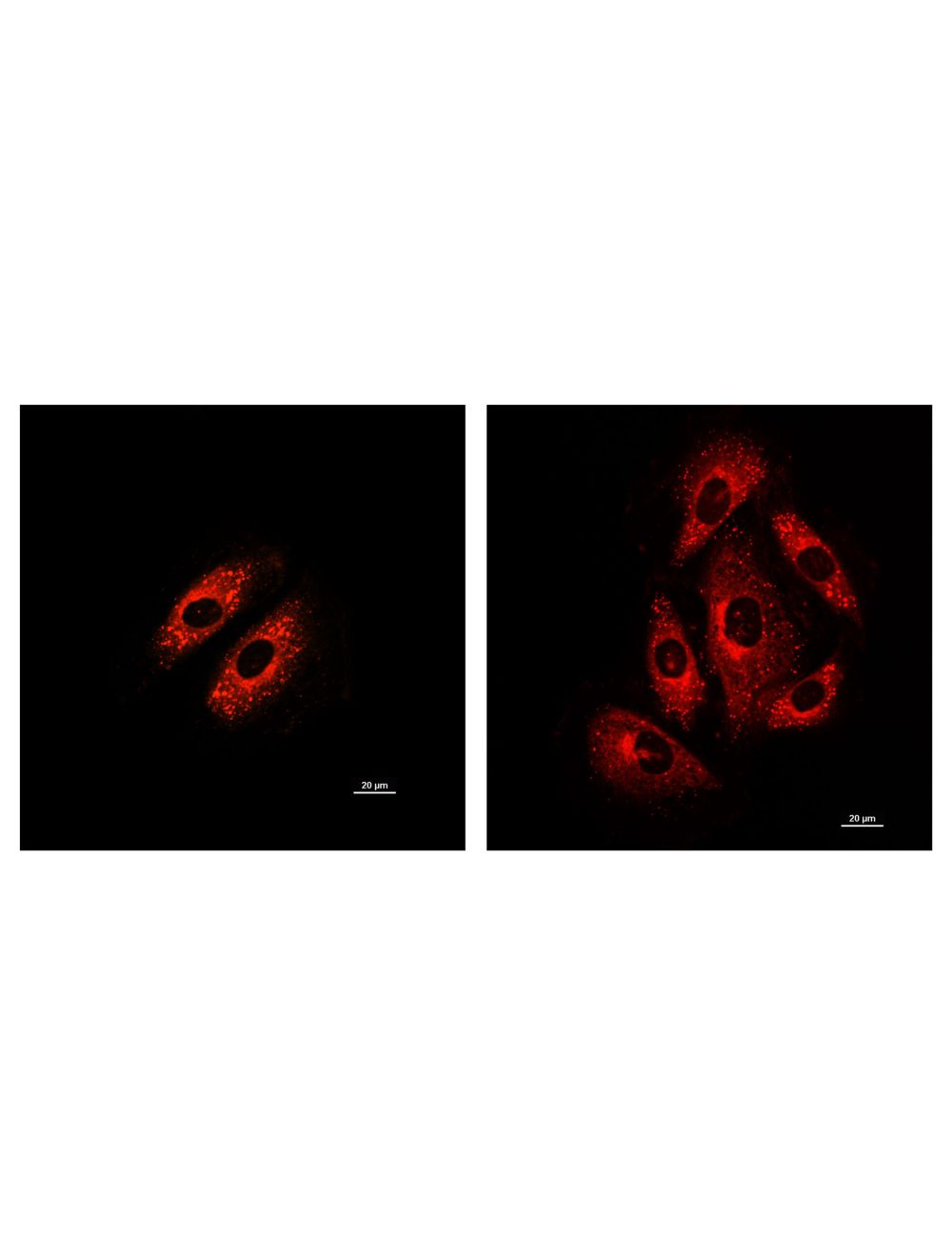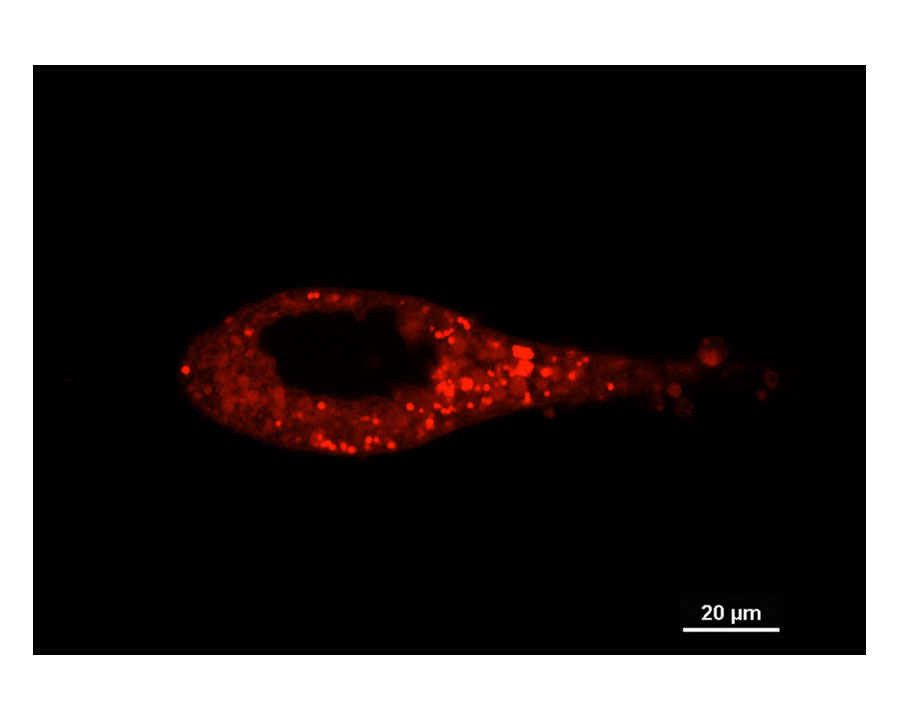LipoFluor-P2™ Ready-to-Dilute™, Polar Lipid and Endoplasmic Reticulum Tracing Reagent
As low as
US$297.00
Only %1 left
Catalog Number
TR-603
- Product Name LipoFluor-P2™ Ready-to-Dilute™, Polar Lipid and Endoplasmic Reticulum Tracing Reagent
-
Product Description
LipoFluor-P2™ is a cell-permeant stain for intracellular lipid droplets and the endoplasmic reticulum. This tracing reagent can be used on live and fixed cells and is compatible with other dyes. LipoFluor-P2™ has a large Stokes Shift, shows excellent resistance to photobleaching, and demonstrates low cytotoxicity.
- Application(s) IF, ICC, Live Cell IF
- Specificity Fluorescent imaging of lipid-rich cellular compartments. Cell penetration and localisation of LipoFluor-P2™ has been confirmed in cardiomyocytes, H9c2 cell line and LNCaP prostate cells.
- Species Reactivity Human, Mouse, Other Mammals, Rat
- Concentration 10mM
- Purity Description Thin layer chromatography using alumina plates and a solvent system of ethanol and water (3:1) revealed the presence of fluorescent isomers. No amount of starting material was detected.
- Regulatory Status For research use only.
Product Info
-
Product Description
LipoFluor-P2™ is a cell-permeant stain for intracellular lipid droplets and the endoplasmic reticulum. This tracing reagent can be used on live and fixed cells and is compatible with other dyes. LipoFluor-P2™ has a large Stokes Shift, shows excellent resistance to photobleaching, and demonstrates low cytotoxicity.
-
Related Products
LipoFluor-P1™ Ready-to-Dilute™, Polar Lipid Tracing Reagent
LipoFluor-ER1™ Ready-to-Dilute™, Endoplasmic Reticulum Tracing Reagent
LipoFluor-MR™ Ready-to-Dilute™, Mitochondria Tracing Reagent
LipoFluor-ER2™ Ready-to-Dilute™, Endoplasmic Reticulum – Blue Tracing Reagent
- Application(s) IF, ICC, Live Cell IF
-
Application Details
Fluorescent imaging of lipid-rich compartments.
Sample types: live cells, fixed cells (4% paraformaldehyde). Serum-free culture medium is recommended for staining, as lipids contained in serum can reduce signal. Please refer to the product manual
Epifluorescence microscopy: YES
Confocal microscopy: YES
Multiphoton imaging: YES
Infrared spectroscopy: NO
Raman spectroscopy: NO
Ex/Em: 405 nm / 600 nm.
The typical working concentration is 10µM (1:1000 dilution) in an appropriate buffer or cell culture medium. Biosensis recommends that the end user determine optimal dilutions/concentrations. - Target Polar lipids and endoplasmic reticulum
- Specificity Fluorescent imaging of lipid-rich cellular compartments. Cell penetration and localisation of LipoFluor-P2™ has been confirmed in cardiomyocytes, H9c2 cell line and LNCaP prostate cells.
- Target Host Species Human
- Species Reactivity Human, Mouse, Other Mammals, Rat
- Ex/Em Max Ex/Em: 405 nm / 600 nm
- Detection Method Fluorescence
-
Kit Components
Materials provided:
LipoFluor™ Stain Reagent, 1000X, 4 vials - Purity Description Thin layer chromatography using alumina plates and a solvent system of ethanol and water (3:1) revealed the presence of fluorescent isomers. No amount of starting material was detected.
- Format The reagents in the LipoFluor™ RTD™ (1000X) are all supplied in a liquid format and are ready-to-dilute.
- Concentration 10mM
- Reconstitution Instructions Dilute solutions as directed in the protocol instructions.
- Storage Instructions The liquid stock solution vials can be stored up to 12 months from date of receipt at 2-8°C, properly sealed and protected from light. Working solutions should be used within 24 hours and not stored for later use.
- Storage Temperature 2-8°C
- Batch Number Please see item label.
- Expiration Date If protected from light, the liquid 10 mM stock solution vials are stable for 12 months from date of receipt, at 2-8ºC. A vial should be diluted immediately prior to use and should be used within 24 hours for best results.
- Shipping Temperature 2-8°C (on cold packs)
- UNSPSC CODE 60103920
- Regulatory Status For research use only.

 1800 605-5127
1800 605-5127 +61 (0)8 8352 7711
+61 (0)8 8352 7711


